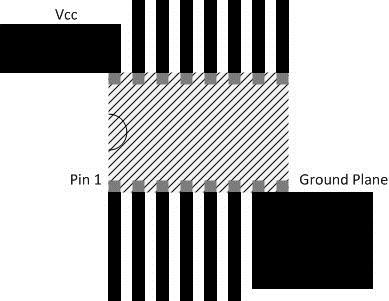SCLS429K MAY 1999 – November 2016 SN74LV4052A
UNLESS OTHERWISE NOTED, this document contains PRODUCTION DATA.
- 1 Features
- 2 Applications
- 3 Description
- 4 Revision History
- 5 Pin Configuration and Functions
-
6 Specifications
- 6.1 Absolute Maximum Ratings
- 6.2 ESD Ratings
- 6.3 Recommended Operating Conditions
- 6.4 Thermal Information
- 6.5 Electrical Characteristics
- 6.6 Switching Characteristics: VCC = 2.5 V ± 0.2 V
- 6.7 Switching Characteristics: VCC = 3.3 V ± 0.3 V
- 6.8 Switching Characteristics: VCC = 5 V ± 0.5 V
- 6.9 Switching Characteristics: Analog
- 6.10 Operating Characteristics
- 6.11 Typical Characteristics
- 7 Parameter Measurement Information
- 8 Detailed Description
- 9 Application and Implementation
- 10Power Supply Recommendations
- 11Layout
- 12Device and Documentation Support
- 13Mechanical, Packaging, and Orderable Information
Package Options
Refer to the PDF data sheet for device specific package drawings
Mechanical Data (Package|Pins)
- DB|16
- PW|16
- NS|16
- N|16
- RGY|16
- D|16
- DGV|16
Thermal pad, mechanical data (Package|Pins)
- RGY|16
Orderable Information
11 Layout
11.1 Layout Guidelines
TI recommends keeping the signal lines as short and as straight as possible (see Figure 15). Incorporation of microstrip or stripline techniques are also recommended when signal lines are more than 1 in. long. These traces must be designed with a characteristic impedance of either 50-Ω or 75-Ω as required by the application. Do not place this device too close to high-voltage switching components because they may cause interference. Not all PCB traces can be straight and therefore some traces must turn corners. Figure 16 shows progressively better techniques of rounding corners. Only the last example (BEST) maintains constant trace width and minimizes reflections.
11.2 Layout Example
 Figure 15. Layout Schematic
Figure 15. Layout Schematic
 Figure 16. Trace Example
Figure 16. Trace Example